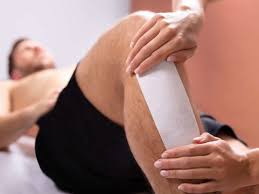
When it comes to grooming and hair removal, professional waxing is often considered the holy grail of smooth skin. However, along with its undeniable benefits comes a slew of myths and misconceptions that can deter even the most curious individuals. From horror stories about excruciating pain to tales of long-lasting redness and irritation, the world of professional waxing is shrouded in mystery and apprehension. In this article, we will delve deep into the myths and facts surrounding this popular hair removal method, uncovering the truth beyond the pain and revealing why professional waxing may just be worth giving a chance.
Myth 1: Waxing Is Extremely Painful
Waxing is often associated with the uncomfortable sensation of ripping hair out by the root. However, this common myth has caused many people to shy away from this tried and true hair removal method. The truth is, while waxing may cause some discomfort, it is far from an excruciating experience. Modern salons have made significant advancements in both their techniques and the products they use, creating a more pleasant waxing experience overall.
Fact 1: Waxing Pain Varies For Each Individual
When it comes to professional waxing, one common misconception is that the pain is universal and equally unbearable for everyone. However, the truth is that waxing pain varies greatly from person to person. Each individual’s tolerance for pain differs due to factors such as genetics, skin sensitivity, and personal pain thresholds.
- One explanation for this disparity in pain perception during waxing lies in our nerve endings. Dr. Jessica Wu, a renowned dermatologist, explains that some individuals have more nerve endings in certain areas of their bodies than others. This means that someone with a higher concentration of nerve endings in an area being waxed may experience more discomfort compared to someone with fewer nerve endings.
- Moreover, other factors such as hormone levels and age can also impact the degree of pain felt during waxing sessions. Hormonal fluctuations can make the skin more sensitive and susceptible to discomfort during hair removal procedures. Additionally, younger individuals tend to have fewer years of prior waxing experience compared to older ones who may have developed a higher tolerance for the process over time.
Myth 2: Waxing Causes Permanent Damage To The Skin
Contrary to popular belief, waxing does not cause permanent damage to the skin. While it’s true that the process involves removing hair from the root, which can cause slight irritation or redness, these effects are temporary and typically subside within a few hours. In fact, regular waxing can actually benefit the skin by exfoliating dead cells and promoting healthy cell turnover.
One of the reasons people may mistakenly think that waxing causes permanent damage is due to misconceptions about ingrown hairs. Ingrown hairs occur when a new hair grows back into the skin instead of upwards. This can happen regardless of whether you wax or shave and is more dependent on your individual hair growth pattern. Regular exfoliation before and after waxing can help minimize ingrown hairs, but with proper care, they are generally avoidable.
Fact 2: Proper Technique And Aftercare Minimizes Risks
Proper technique and aftercare are crucial aspects of professional waxing that often go overlooked. While many people may view waxing as a simple process, the truth is that without the right techniques, it can be risky and lead to unwanted side effects. However, when performed by skilled professionals who prioritize proper technique and post-wax care advice, these risks can be minimized significantly.
- One essential aspect of proper technique is ensuring that the wax is applied in the direction of hair growth and removed against the grain. This approach allows for more effective removal of hair while also reducing the likelihood of ingrown hairs. Additionally, using high-quality wax and tools ensures a cleaner and more comfortable experience for clients.
- Equally important as proper technique is aftercare. Professionals should educate their clients on how to care for their skin following a waxing session to avoid potential complications such as infections or inflammation. Recommending gentle exfoliation to prevent ingrown hairs, avoiding sun exposure right after treatment, and using soothing products like aloe vera or tea tree oil are just some examples of maintaining healthy skin post-wax.
Myth 3: Waxing Leads To Increased Hair Growth
Contrary to popular belief, waxing does not cause increased hair growth. This myth has been perpetuated for years, causing many people to shy away from this popular hair removal method. However, the truth is that waxing actually leads to a reduction in hair growth over time.
When you wax, the entire hair follicle is removed from its root. This process weakens the follicle and can eventually lead to its complete destruction with repeated treatments. As a result, the regrowth of hair becomes slower and more sparse over time. It may seem like you have more hair growing back initially after waxing because all your hairs are synchronized in their growth cycle due to being removed at once. Rest assured that as you continue with regular waxing sessions, the density of your hair will decrease significantly.
Fact 3: Hair Growth Is Determined By Genetics
When it comes to hair growth, there is no denying the role of genetics. Your genes play a significant role in determining not only how fast your hair grows but also its thickness and texture. This means that no matter how many fancy products or treatments you try, ultimately, your genetics dictate the fate of your locks.
Understanding the genetic basis of hair growth can help dispel some common misconceptions surrounding it. For example, many people believe that shaving or waxing will make their hair grow back thicker and darker. However, this is purely a myth. The truth is that when you shave or wax, you are merely removing the hair from the surface level, and it has no impact on the rate or density of regrowth. It is your genes doing all the talking.
Conclusion:
In conclusion, it is clear that many common misconceptions about professional waxing have been debunked. While pain may be a concern for some, it is important to remember that experienced estheticians use techniques and products specifically designed to minimize discomfort. Additionally, the idea that waxing always results in ingrown hairs is simply not true. With proper exfoliation and aftercare, the risk of ingrown hairs can be greatly reduced. Professional bikini waxing Scottsdale offers a range of benefits beyond just hair removal. Despite the myths surrounding the pain associated with waxing, many individuals find that the discomfort is minimal and temporary compared to other hair removal methods.
Another myth that has been debunked is the notion that waxing causes skin damage or scarring. In reality, professional waxing is a safe and effective hair removal method when performed by a trained professional using high-quality products. It is also important to remember that everyone’s skin reacts differently to treatments, so if you have concerns about your specific skin type or any potential allergies, it is best to consult with your esthetician before proceeding.
Overall, it is essential to separate fact from fiction when it comes to professional waxing. By understanding the truth behind these common misconceptions, individuals can confidently explore this popular hair removal method without hesitation. Professional estheticians are there to guide and support clients through the process, ensuring a comfortable experience with long-lasting results. So why let myths and assumptions hold you back? Give professional waxing a try and see the benefits for yourself!
Also read: Unveiling The Hidden Secrets Of On-Page Optimization For SEO Success





